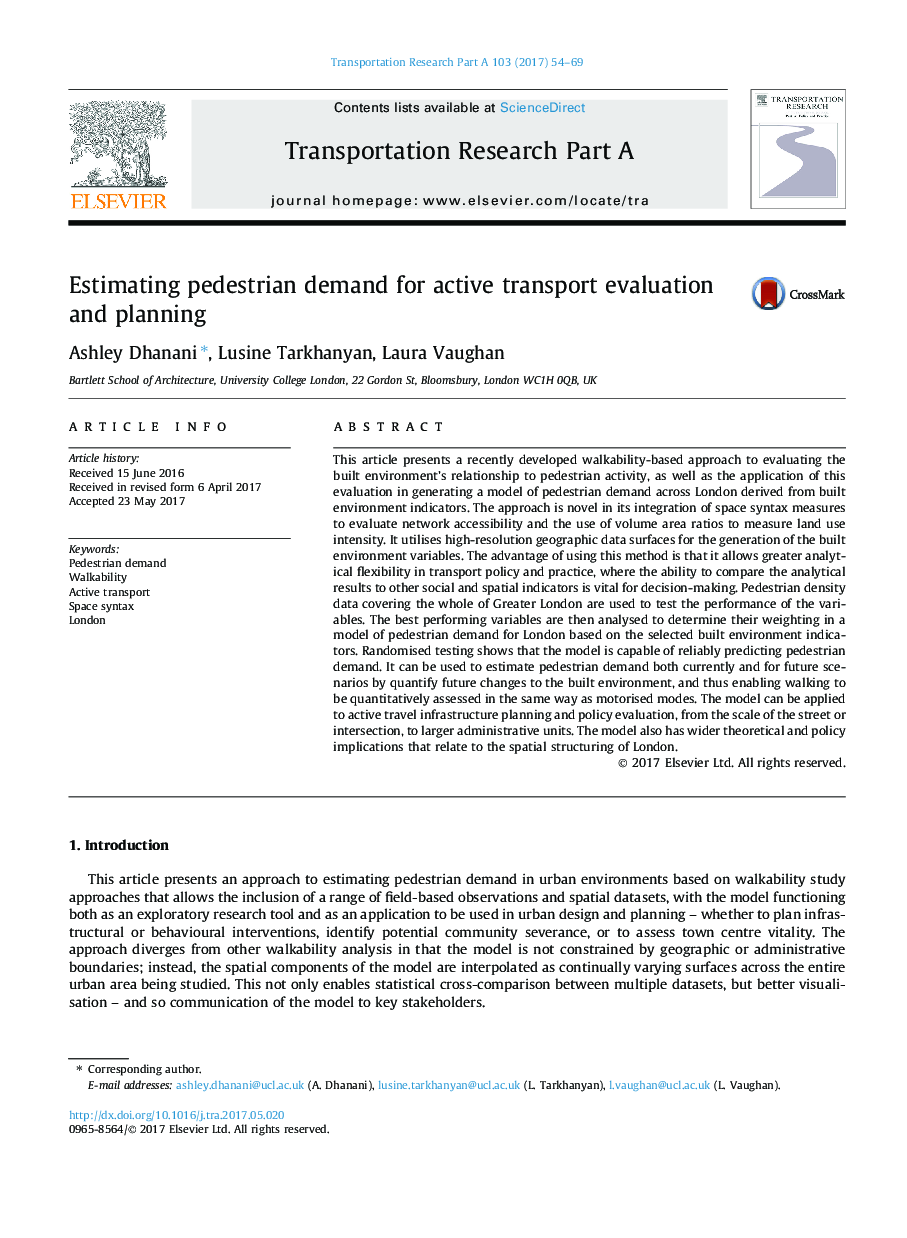| Article ID | Journal | Published Year | Pages | File Type |
|---|---|---|---|---|
| 4928906 | Transportation Research Part A: Policy and Practice | 2017 | 16 Pages |
Abstract
This article presents a recently developed walkability-based approach to evaluating the built environment's relationship to pedestrian activity, as well as the application of this evaluation in generating a model of pedestrian demand across London derived from built environment indicators. The approach is novel in its integration of space syntax measures to evaluate network accessibility and the use of volume area ratios to measure land use intensity. It utilises high-resolution geographic data surfaces for the generation of the built environment variables. The advantage of using this method is that it allows greater analytical flexibility in transport policy and practice, where the ability to compare the analytical results to other social and spatial indicators is vital for decision-making. Pedestrian density data covering the whole of Greater London are used to test the performance of the variables. The best performing variables are then analysed to determine their weighting in a model of pedestrian demand for London based on the selected built environment indicators. Randomised testing shows that the model is capable of reliably predicting pedestrian demand. It can be used to estimate pedestrian demand both currently and for future scenarios by quantify future changes to the built environment, and thus enabling walking to be quantitatively assessed in the same way as motorised modes. The model can be applied to active travel infrastructure planning and policy evaluation, from the scale of the street or intersection, to larger administrative units. The model also has wider theoretical and policy implications that relate to the spatial structuring of London.
Related Topics
Physical Sciences and Engineering
Engineering
Civil and Structural Engineering
Authors
Ashley Dhanani, Lusine Tarkhanyan, Laura Vaughan,
